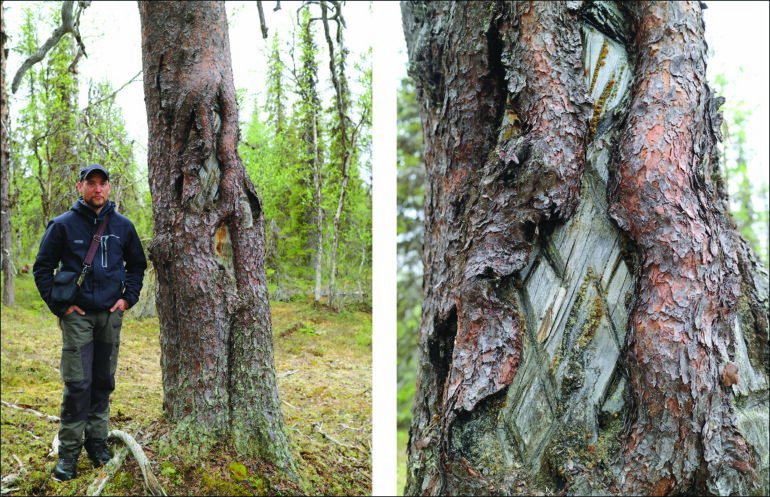Archaeologists analyzed trees engraved by the Indigenous Sámi of Arctic Europe, revealing the significance of these rare remnants of Sámi culture and the importance of preserving them from ongoing deforestation.
The Sámi are the Indigenous people of Sápmi, a region in northern Europe that encompasses northern Fennoscandia and north-west Russia.
They followed an animistic religion, but a concentrated effort by the Scandinavian Church in the 17th century AD led to the destruction of religious artifacts and a decline in the Sámi oral tradition, meaning their culture and history is under threat.
However, one important aspect of the Sámi culture managed to survive this repression. Some trees throughout Sápmi were incised with markings holding social and religious significance.
“Unlike most other sacred objects, standing trees are not easy to collect and they have generally eluded the ambitions of the Church to erase the traces of the Indigenous religion,” states co-author of the research, Dr. Ingela Bergman from INSARC/Silvermuseet.
To identify the significance of these trees, Professor Lars Östlund from the Swedish University of Agricultural Sciences, Dr. Bergman and Professor Olle Zackrisson from INSARC Silvermuseet identified trees engraved with Sámi symbolism, comparing them with ethnographic accounts of Sámi culture. Their results are published in the journal Antiquity.
They identified hundreds of Scots pine trees in the northern boreal forests of Fennoscandia, predominantly in national parks, engraved with X-marks and geometric patterns.
According to the ethnographic research, trees were seen by the Sámi as mediators between people and deities. They also had pragmatic uses, acting as boundary markers and navigational aids in the harsh, seasonal landscape of the northern boreal forests.
X-marks also played a significant role in Sámi ritual practice, with crosses being carved on antlers and reindeer blood smeared in X-shapes on sacrificial wooden objects. Therefore, the engraving of trees with crosses likely took place while offerings were made to deities, with the trees acting as mediators.
“The spiritual and pragmatic natures of trees were not mutually exclusive,” says Professor Östlund. “X-marks on trees could define a family’s territory, while simultaneously indicating its spiritual connection to the land.”
These trees are clearly important symbols of Sámi religion and culture, but are also under threat. Extensive deforestation for lumber since the 19th century has massively reduced the number of ancient Scots pines, including those with X-marks.
Before the 20th century, thousands of these trees were present across Sápmi. As they decline, so too does the transmission of experience and knowledge from generation to generation.
“Culturally marked trees bear silent witness to (pre)historic land use, movement patterns and sacred spaces,” conclude Dr. Bergman and Professor Östlund. “Therefore, there is an urgent need for the documentation, interpretation and protection of all remaining culturally marked trees.”
More information:
Ingela Bergman et al, X-marked trees: carriers of Indigenous Sámi traditions, Antiquity (2024). DOI: 10.15184/aqy.2024.184
Citation:
Engraved trees map the way to preserving Sámi culture (2024, November 20)



